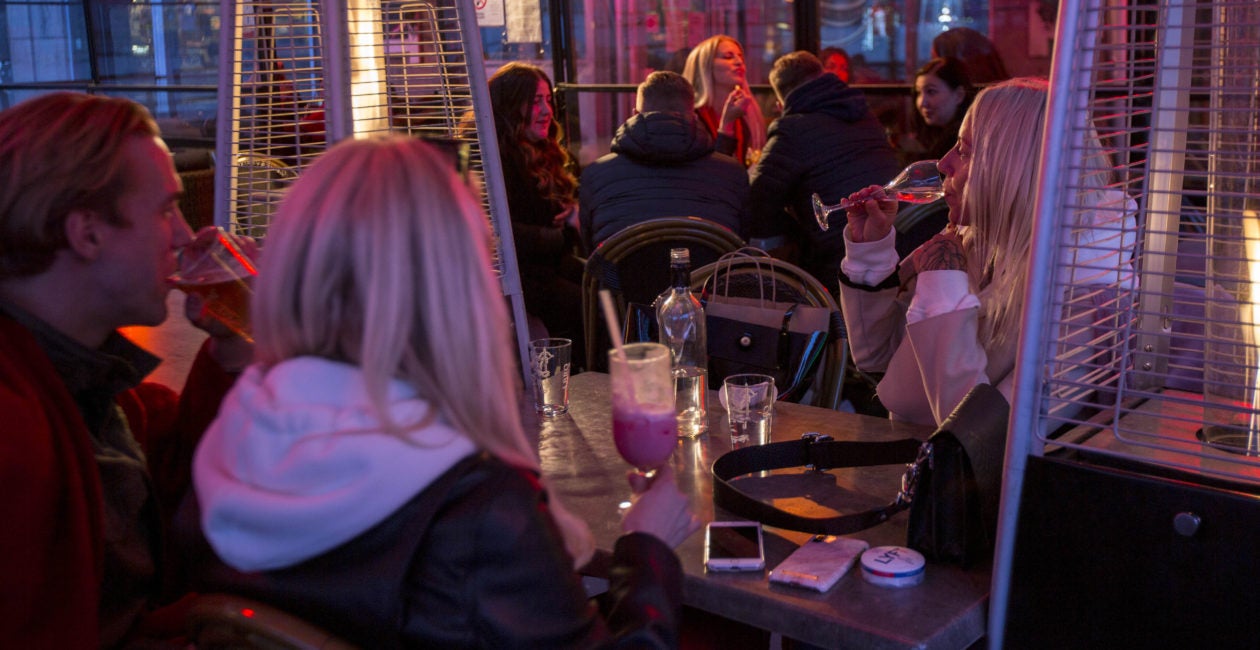After logging over 1,000 COVID-19 deaths, Sweden has faced a rash of criticism for having perhaps the least restrictive rules in the world regarding social distancing, as restaurants and bars and some schools remain open while staying at home is urged but not mandated.
But don’t let that fool you because Sweden is still a different place from what it used to be, said Johan Norberg, an economics writer who lives in Stockholm and most recently the author of the award-winning book “Progress: Ten Reasons to Look Forward to the Future.”
“Most people stay at home, don’t travel, rarely go to restaurants, and don’t meet with the older generation. And people keep the distance when they meet on the street,” Norberg said in an email interview with The Daily Signal.
The Daily Signal depends on the support of readers like you. Donate now
“You have probably seen pictures of a crowded Stockholm restaurant. Well, that is … the one time it was crowded, and if they had turned the camera in the opposite direction they would have found an empty square.”
Here are four keys to determining the effectiveness of Sweden’s COVID-19 policy.
1. What’s the Actual Policy?
The characterization of Sweden as freewheeling during the coronavirus pandemic is inaccurate, said Joshua Michaud, associate director for global health at Kaiser Family Foundation.
“Sweden has taken a middle path between lockdown and letting it run rampant. It’s not business as usual,” Michaud told The Daily Signal in a phone interview. “They strongly suggest working from home if you can. There can’t be congregations of more than 50 people.”
The Swedish government did ask citizens not to travel or visit family over Easter.
Norberg, a senior fellow with the Washington, D.C.-based Cato Institute, a libertarian think tank, said that Sweden seems safe and not so different from most other places:
The difference is that we follow these recommendations voluntarily, which gives more space for individual knowledge and needs, and might even make it more sustainable than a system where everybody is forced to stay at home indefinitely and will rebel eventually. Yes, it seems safe.
Restaurants, bars, playgrounds, and parks are open. Elementary schools also are open, but not high schools and colleges, Michaud said, which he said he finds somewhat puzzling.
During a White House briefing on COVID-19 last week, President Donald Trump criticized Sweden’s approach.
“Now, they talk about Sweden, but Sweden is suffering very gravely,” Trump said, then referred to the concept of herd immunity. “They call it the herd. Sweden is suffering very, very badly.”
Sweden’s state epidemiologist, Anders Tegnell, told CNN that the country’s policy is “producing quality results the same way it’s always done. So far Swedish health care is handling this pandemic in a fantastic way.”
Swedish Foreign Minister Ann Linde pushed back against Trump on Swedish TV, saying the American president was “factually wrong” and that Sweden was not following a “herd immunity” policy.
Linde summarized her country’s policy this way: “No lockdown, and we rely very much on people taking responsibility themselves.”
Herd immunity means sheltering only the vulnerable population and, in this case, exposing most of the general public to the virus to build immunity.
2. How Does the Death Toll Compare?
The COVID-19 death rate in Sweden, at over 1,000 out of a population of 10.2 million, is lower than some other European countries such as Italy and the United Kingdom.
However, Sweden’s death rate from the disease is higher than other Nordic countries, according to Kaiser Family Foundation.
Norway has had 128 deaths from COVID-19 out of a population of 5.4 million. Finland, with 5.5 million, has had fewer than 100 deaths, and Denmark, with 5.6 million, has had 275 deaths.
For that matter, the United States has a lower death rate, with 71 COVID-19 deaths per 1 million population, according to Worldometers. The United States has had 22,252 coronavirus deaths, according to the Centers for Disease Control and Prevention.
By contrast, Sweden’s death rate works out to 91 per 1 million population.
“We see the balance that Sweden has struck has provided some semblance of normality, but it has come at the cost of a large number of deaths,” Michaud said.
It’s too early to know, but Sweden later may be seen as a success because its smaller population allows it to respond more easily, said Dr. Kevin Pham, a medical doctor and contributor to The Daily Signal.
“In the U.S., we had breakouts in Washington, then New York, two major population centers. Sweden has not had that,” Pham told The Daily Signal. “They do have more deaths per capita now, so if we start seeing more signs of trouble, they will change their tactics, But it could work. It depends what they see on the ground.”
3. Is the Economy Really Better Off?
Sweden’s economy has taken a hit, but less so than many other countries, Norberg said.
“One reason why we’ve done this [comparatively liberal policy] is economic concerns. Only getting 30% of your normal revenue might be a disaster for a restaurant or a shop, but it’s better than 0%,” Norberg said, adding:
Whether it works or not remains to be seen. Sweden is a very export-dependent country, and when others are shutting down we are suffering too. But there is also the idea that this might be the best way to protect us in the long run.
Those who are shutting down society will see a second wave when they open up, and a third, whereas Sweden protects the old while others get immune, so that we will hopefully get out of this nightmare sooner than others.
Nevertheless, Sweden has taken a tougher economic hit than it did during the 2008 financial crisis, just not as tough as some other countries’ coronavirus-battered economies, Kaiser Family Foundation’s Michaud said.
4. How Does the Policy Play Politically?
Sweden’s COVID-19 policy has sparked debate, but generally is popular, observers say.
On Tuesday, in light of the death toll surpassing the milestone of 1,000, 22 academics signed onto an op-ed with the Dagens Nyheter newspaper.
“The approach must be changed radically and swiftly,” they said, adding:
Close schools and restaurants in the same way that Finland has. All people working with elderly must wear adequate protective equipment. Start mass testing of all personnel that treat patients and test for antibodies so that those who have immunity can go back to work.
Sweden’s “balanced approach” of not enforcing lockdown has 50% support from the public, Michaud said.
The party running the government is getting higher marks for what some consider a cautious approach, Norberg noted.
“There is some opposition to this cautious model, but so far it is not widespread in the population, even though that might obviously change,” Norberg said. “The ruling Social Democrats just registered their strongest monthly gain in the polls—almost 7 points from 24% to 31%, which seems to suggest that the public is rewarding their way or responding.”
Sweden is not the only country to consider a more lenient approach in responding to the coronavirus, noted Nile Gardiner, director of the Margaret Thatcher Center for Freedom at The Heritage Foundation.
“The U.K. originally started down a similar path, but reversed course based on advisers using the Imperial College [London] model that warned of a huge number of deaths,” Gardiner told The Daily Signal in a phone interview. “It remains to be seen if the Swedish approach could be effective. It’s a risky path.”
The varying approaches make a larger point about Europe, Gardiner said:
The coronavirus crisis demonstrates how weak and also irrelevant the European Union is in a situation like this. European governments have pursued their own responses. The nation-state is important in addressing a crisis like this, rather than a European-wide response.




























